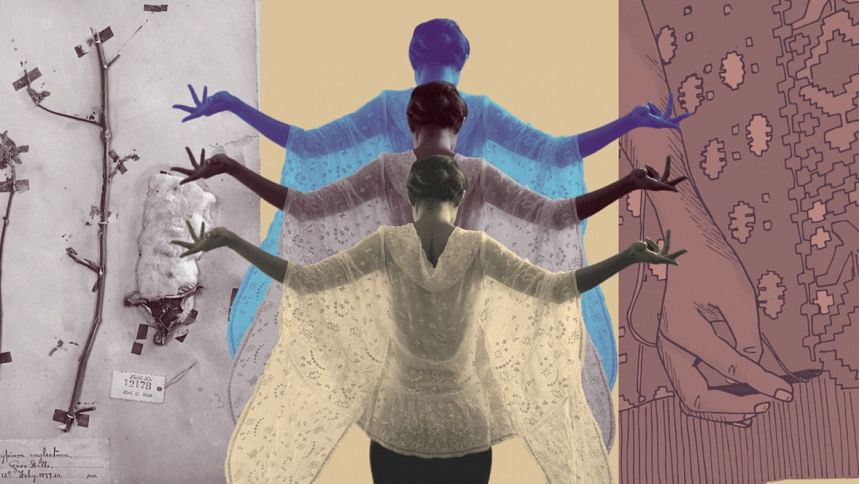The mysteries of muslin

Every culture has its own identity, sometimes through a craft or uniqueness that it is known for. In the late 18th century, Dhaka became known for making Jamdani muslin, "the finest cloth ever woven by human hand", as Shweta Gandhi said in the Indian Vogue.
Today, muslin refers to a fine, industrially woven cotton cloth, which does not resemble the ancient handmade, airy fabric, which caused scandal among Europeans for being translucent.
Most readers, who are familiar with the history of the Jamdani muslin, will be aware that the craft has gone extinct. I did not know the story until I came to Dhaka. The available literature failed to sufficiently answer the many questions I had. Firstly, the word muslin is neither Sanskrit, nor Persian, or even Bengali. So, it is likely a word given by the Europeans who traded cotton cloth through Mosul, an old city in Iraq.
These Europeans possibly used a variation of the city's name for Dhaka's muslin. The other version is that the name derived from Musulipattam, an old European trade centre in India. I was curious about the original term that the weavers used for their unique fabric, but at least the English literature does not relinquish the name.
Then, I had questions of how the decline of the craft occurred. Various sources claim diverging reasons with two predominant thoughts: A BBC coverage says it was simply 'forgotten'. Contrary to that, there is William Bolts—the well-known merchant—who noted in his 1772 published book, "Considerations on India Affairs", that the weavers' thumbs were cut off. The common consensus is that the art was lost due to the systematic destruction of India's textile industry by the British in the late 18th century.
Muslin was made from a cotton plant known as Phuti karpas, which only grew along the banks of the Meghna river. A single flower would blossom twice a year and produce snowy cotton fibres that were impossible to thread into yarn using industrial machinery. Instead, an elaborate16 step process, developed over generations, was the only way to tame the fickle fibres.
First, the cotton was cleaned using the row of tiny teeth on the jawbone of a local catfish. Then, the spinning required humidity and was done on boats in the early morning and afternoon when humidity levels were high. Ideally, young women would spin the yarn because older folks simply couldn't see the threads. The subsequent weaving would take months.
Even the extinction of the Phuti karpas plant is obscure. The BBC claims that it disappeared into the wilderness as the craft was forgotten. This seems debatable if you look at the current efforts to resurrect that plant: no seeds have been preserved and despite extensive search, only a distant relative of Phuti karpas was found in Bangladesh. Another version is that the plant was deliberately destroyed.
If the efforts to resurrect the plant and to redevelop the mysterious weaving process would succeed, it would have a tremendous effect on Bangladesh's economy and its cultural heritage. Muslin is used to make sarees, in my opinion one of the most timelessly elegant dresses. They symbolise cultural identity and social cohesion and for me, as a foreigner, it is an honour to wear it and to show respect for Bangladeshi culture.
So important is the history of muslin, that UNESCO has inscribed the traditional art of Jamdani weaving on the 'Representative List of Intangible Cultural Heritage of Humanity' in 2013. I hope that someday, the ancient art of muslin can once again see the light of day in the 21st century.

 For all latest news, follow The Daily Star's Google News channel.
For all latest news, follow The Daily Star's Google News channel. 










Comments